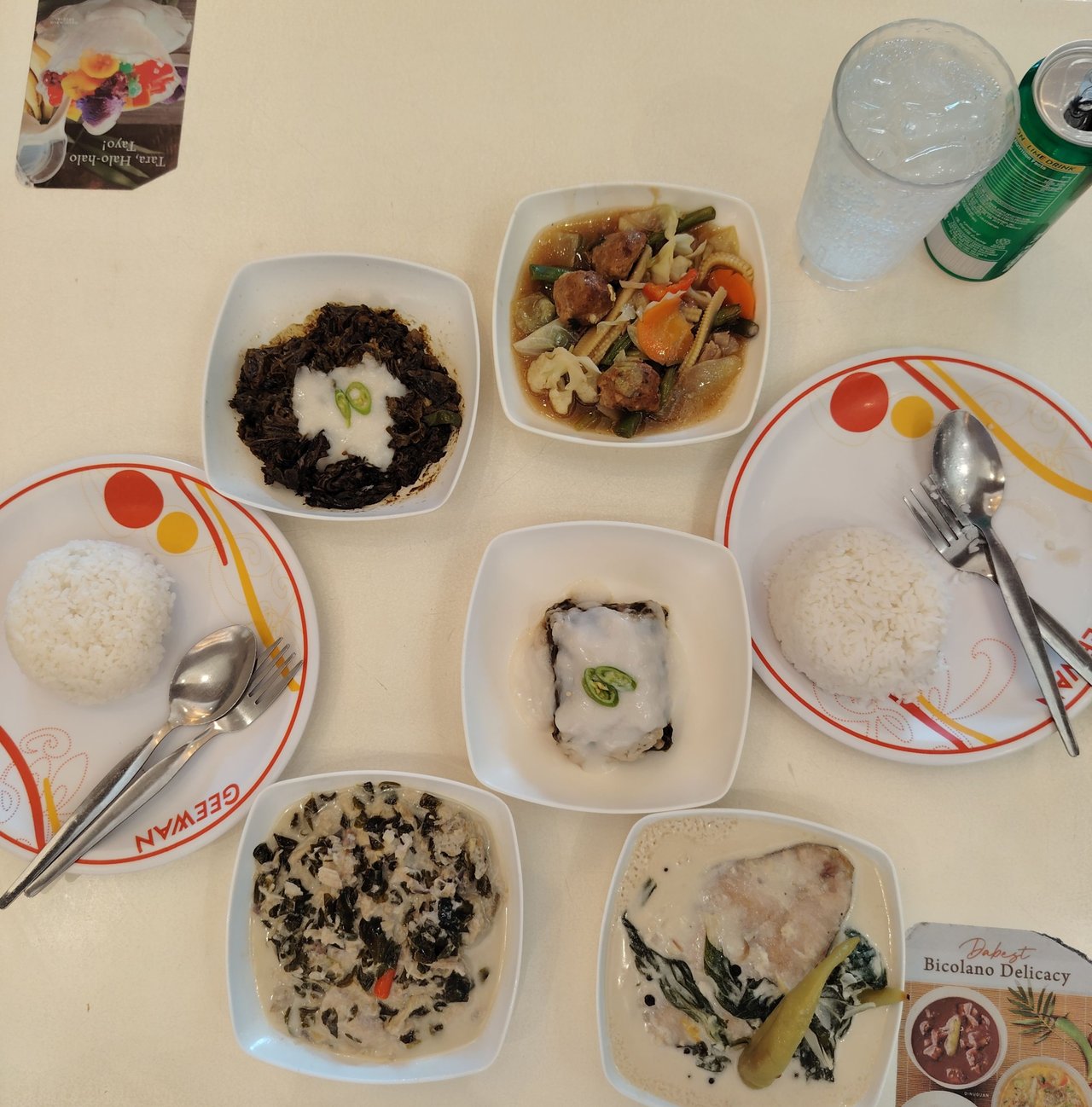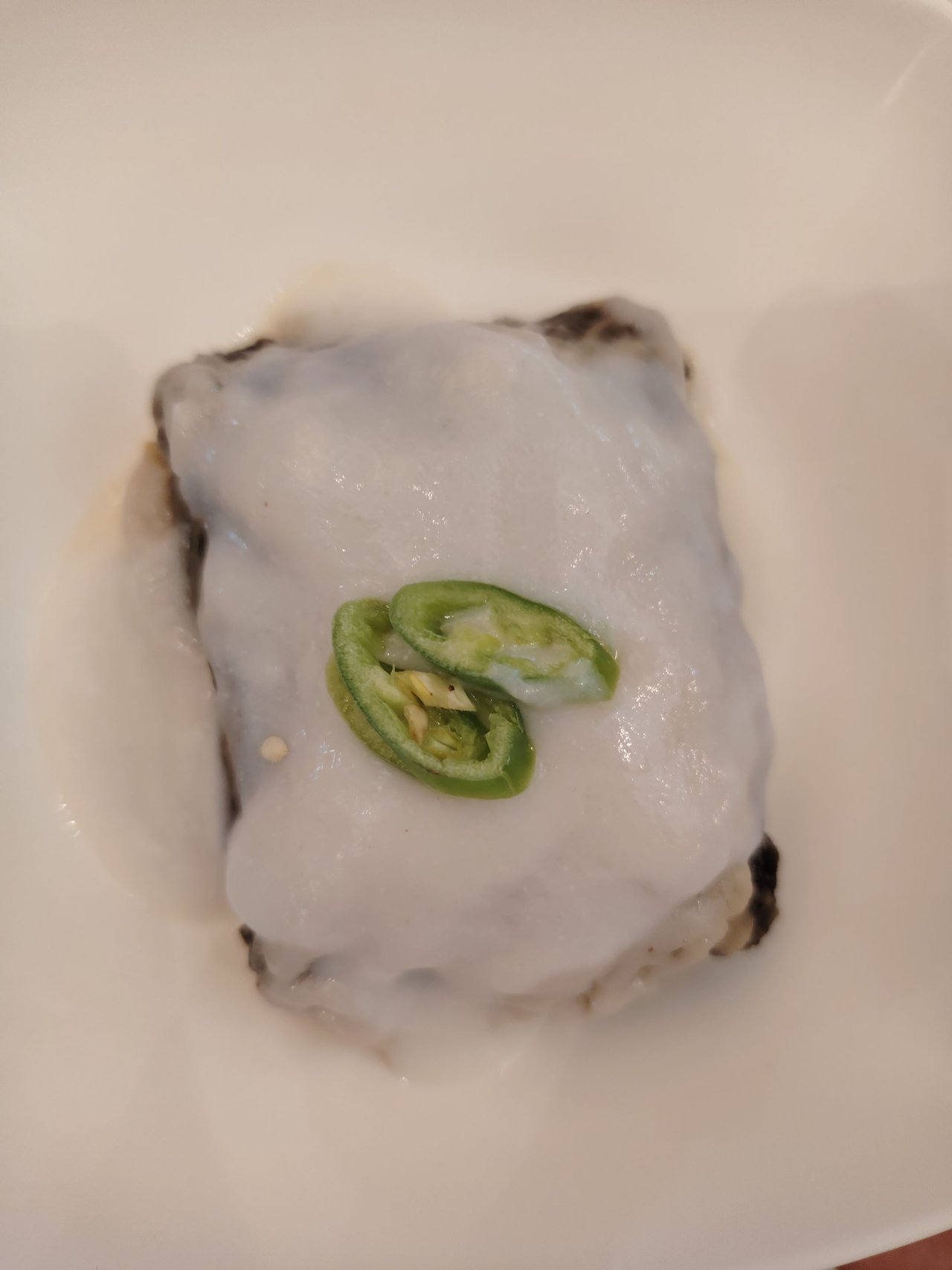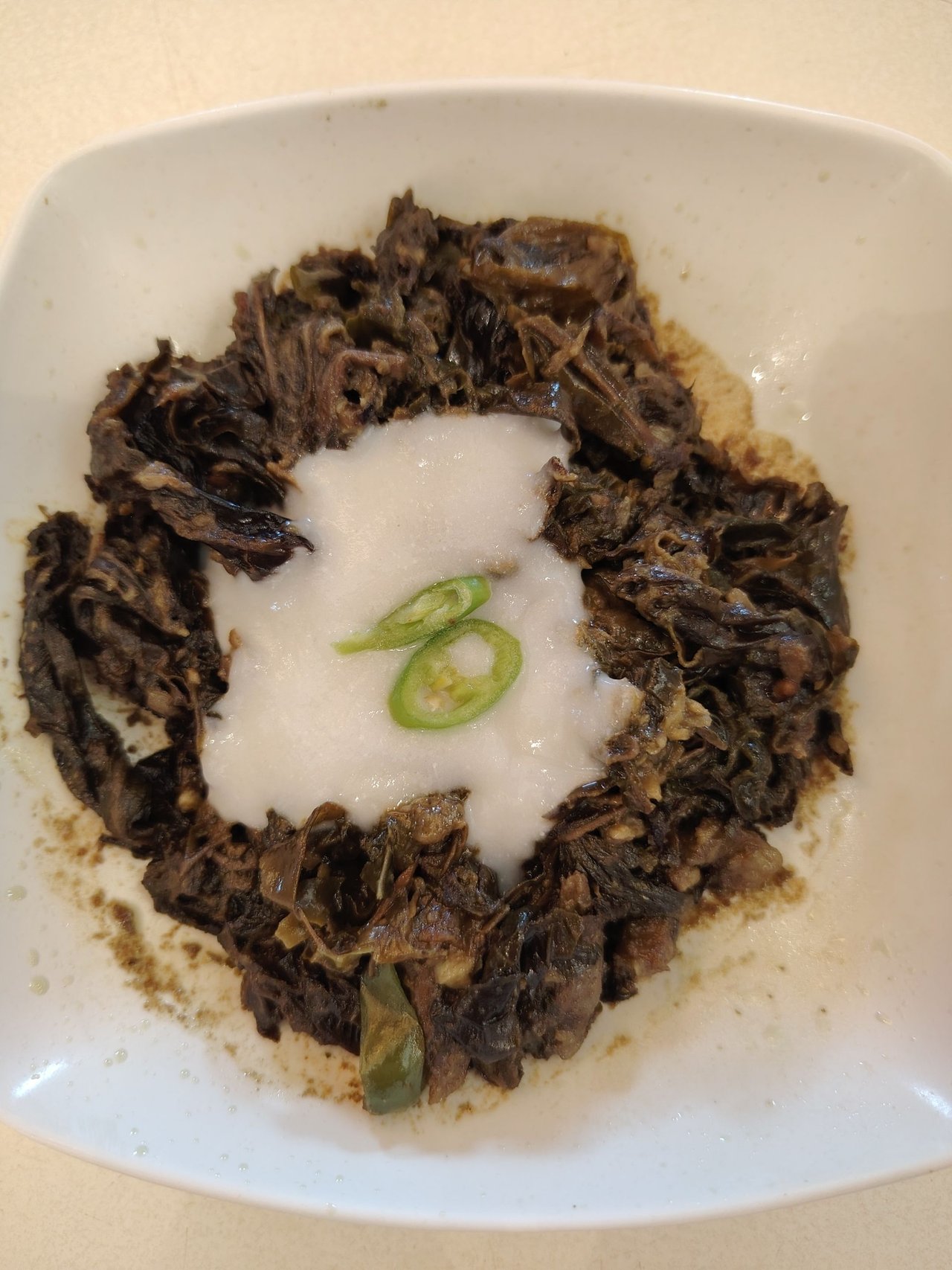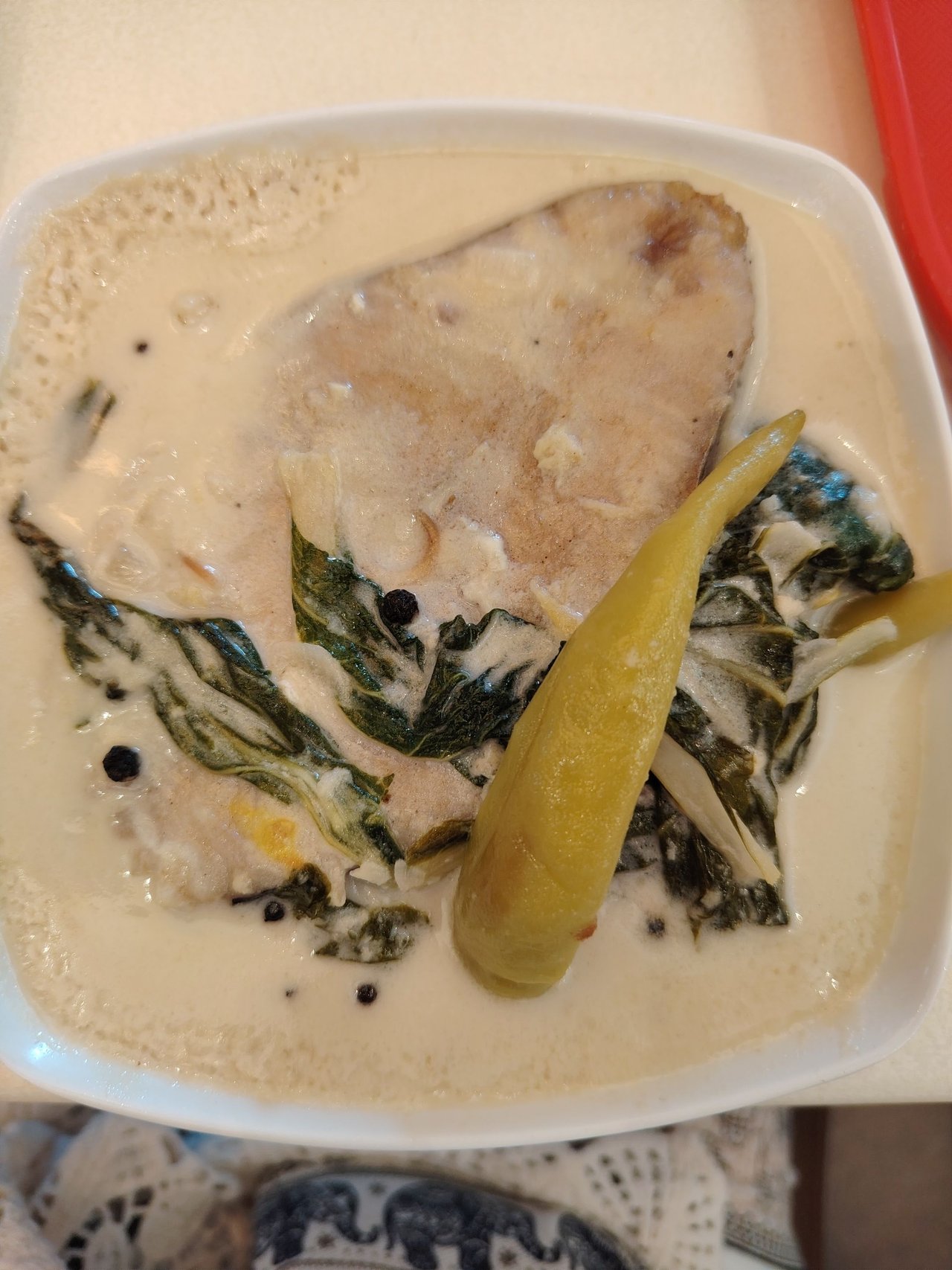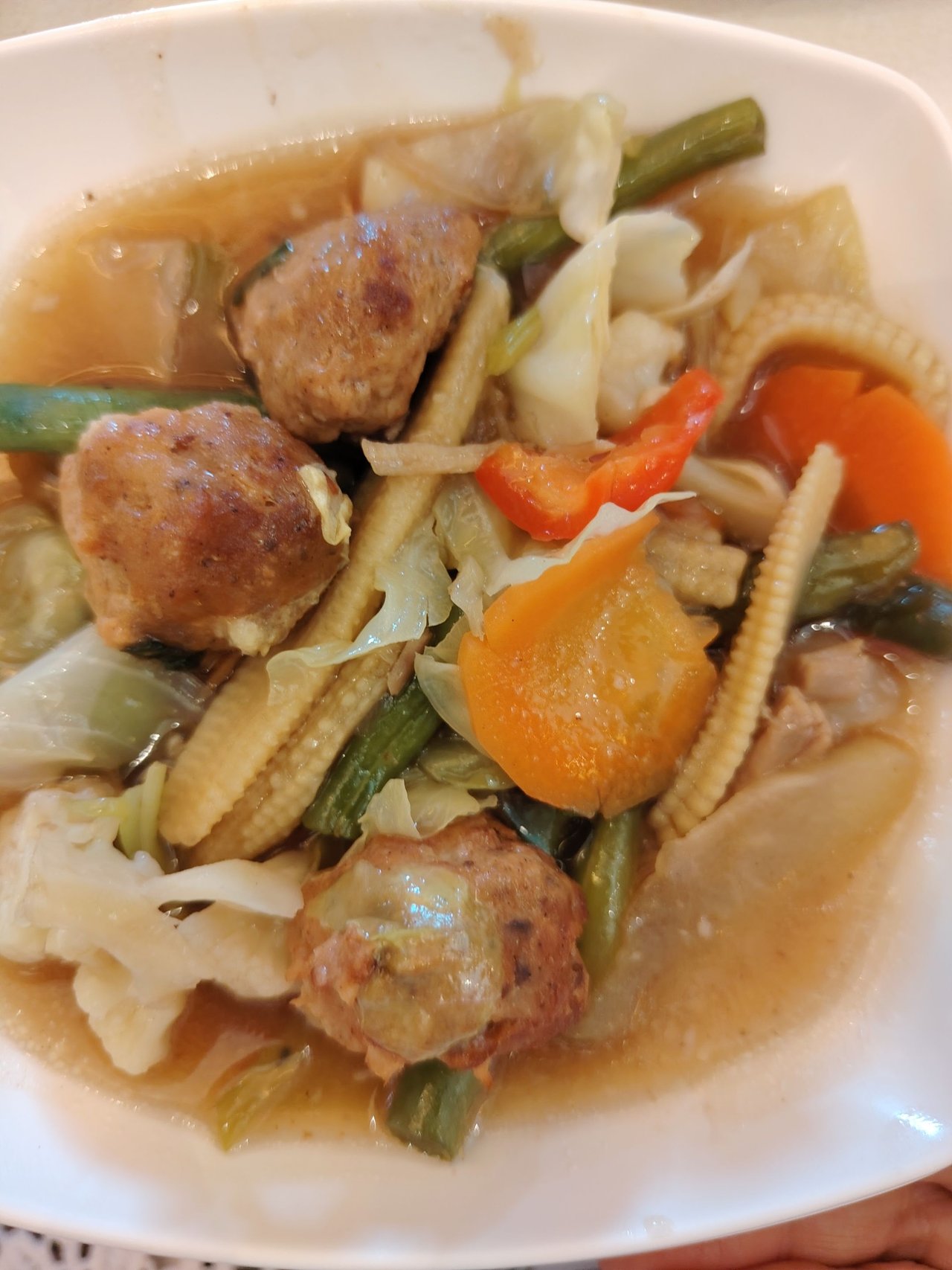⚠️ Warning: This post contains generous amounts of coconut milk, chili, and satisfaction.😅😋
A Table Full of Home
It had been years since my last visit. I missed the food I grew up with—the dishes that reminded me of family and childhood. So when it was time for lunch, we ordered a lot… probably too much for just two people. But honestly? Every bite was worth it.
A Closer Look at the Dishes.
Bicol is known for its love of gata (coconut milk) and sili (chili). Most traditional dishes here are rich, creamy, and spicy—comfort food with a kick.
Here’s what we had:
🍽️ Pinangat
One of the most iconic dishes in Bicol. It’s made from layers of taro leaves (locally called natong), stuffed with a mix of fish flakes or sometimes pork, chili, and spices, then tied with coconut leaf strips and simmered in coconut milk. It’s soft, creamy, and has that gentle heat from the green chili on top. You’ll find this in many Bicolano homes, especially during gatherings.
🌶️ Kinunot
A delicacy often served during special occasions. It uses shredded stingray meat (or sometimes shark) cooked in coconut milk with malunggay (moringa leaves) and chilies. It has a smoky, rich flavor and a slightly chewy texture. For many locals, this dish brings back memories of family lunches and town fiestas.
🍃 Laing
Another staple, similar to pinangat, but simpler. It uses dried taro leaves cooked in thick coconut cream with garlic, onion, shrimp paste, and chili. The leaves are simmered until they become tender and soak up all the rich flavors. It's earthy, spicy, and comforting—and it's usually eaten with hot rice.
🐟 Picadillo (Blue Marlin)
A Bicol twist on a classic dish. Instead of ground meat and tomato sauce, this version uses chunks of blue marlin fish and is cooked in—you guessed it—coconut milk, with leafy greens and chili. It’s not the traditional picadillo you’d expect, but it’s hearty, creamy, and full of local flavor.
🥦 Chopsuey with Meatballs
Not unique to Bicol, but a nice side dish that complements all the creamy, spicy mains. It’s made with mixed vegetables like carrots, cabbage, green beans, and baby corn, stir-fried in a light sauce, then topped with homemade meatballs. It adds a bit of variety and color to the meal.
Sweet and Cool Ending
🥥 Coconut Shake
After all the spice and richness, this cold and creamy drink was exactly what we needed. It’s made from fresh coconut meat and milk, blended with ice—simple but so refreshing.
🍨 Spicy Cream & Pili Ice Cream (from Colonial Creamery)
We ended our meal with something proudly Bicolano. The spicy cream flavor had a subtle heat that reminded us of the local dishes, while the pili ice cream had that nutty, buttery taste unique to the pili nut, which grows in Bicol. Sweet, creamy, and with a local twist—just how dessert should be.
A Quiet Moment Together
While we were eating, I couldn’t help but take a quick photo. I was smiling at the camera, while my husband stayed focused on his food — typical of us. We’ve eaten in so many places together, but this one felt more special. No big set up, just good food and that quiet joy of being back where things feel familiar.
Final Thoughts
This wasn’t a big food adventure. It was just lunch. But like many things in Bicol, it didn’t have to be grand to be meaningful. A few favorite dishes, a little walk, and everything felt complete.
Bicolano food isn’t just about the spice or the coconut milk—it’s about warmth, memory, and being together. For many of us, these dishes are more than meals. They’re stories we grew up with.
And for me, this one simple meal said:
“You’re home.”
